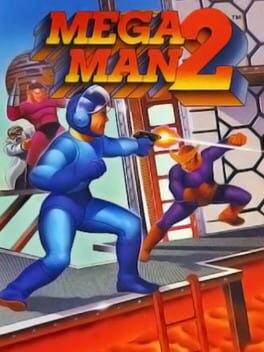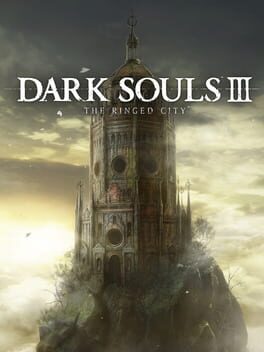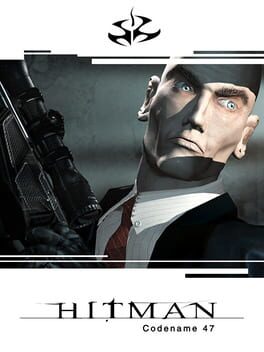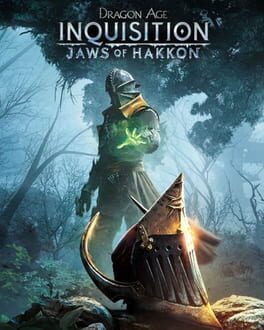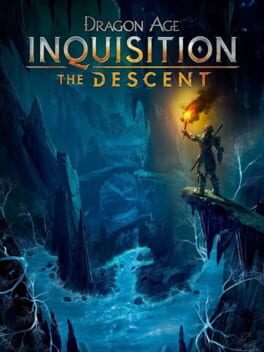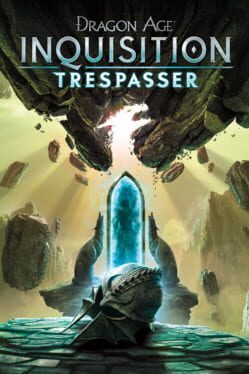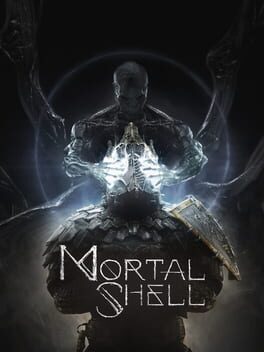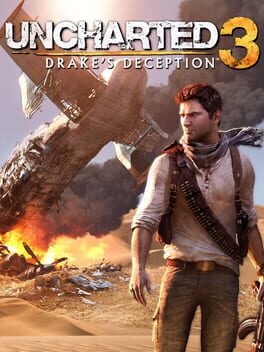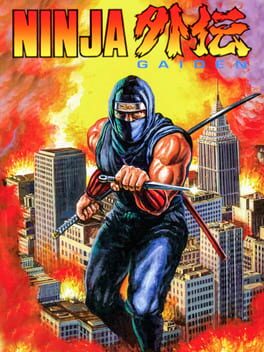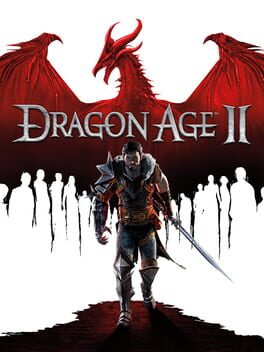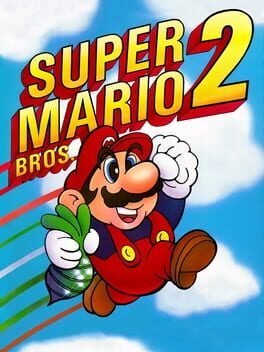squid0812
BACKER
1989
Probably the best NES Mega Man game (3 is really the only other contender), and still one of the better 2D action platformers around, over 30 years after its release.
This is an excellent example of an iterative sequel. Fundamentally, the aesthetic and gameplay ideas of the original game are merely revised rather than overhauled - but, man, those revisions make a world of difference. Whereas the original Mega Man was frequently marred by cheap enemy placement and janky platforming obstacles, Mega Man 2 nails the ‘challenging yet fair’ standard in a way that few NES games ever did. Tough platforming challenges abound, but they rarely feel unnecessarily hostile. In fact, repeatedly running through the tight, compact levels and mastering their various gimmicks is consistently a joy. It is still an NES game, so it’s not flawless in this regard - there are still limited lives, instant-death spikes, enemies with seemingly random patterns, and so on. But the satisfaction derived from progressively improving until you can effortlessly run through each level ultimately patches over any flaws.
The energy that the developers directed towards screwing over players in the original game was also channeled in a much more positive direction here - namely, improving the visual design. This game looks absolutely incredible for something of this vintage. Just about every boss, enemy, and level is impeccably designed, with charm and character to spare. Combine this with the stellar music, and what you end up with is possibly the most visually and aurally pleasing game on the NES.
This is an excellent example of an iterative sequel. Fundamentally, the aesthetic and gameplay ideas of the original game are merely revised rather than overhauled - but, man, those revisions make a world of difference. Whereas the original Mega Man was frequently marred by cheap enemy placement and janky platforming obstacles, Mega Man 2 nails the ‘challenging yet fair’ standard in a way that few NES games ever did. Tough platforming challenges abound, but they rarely feel unnecessarily hostile. In fact, repeatedly running through the tight, compact levels and mastering their various gimmicks is consistently a joy. It is still an NES game, so it’s not flawless in this regard - there are still limited lives, instant-death spikes, enemies with seemingly random patterns, and so on. But the satisfaction derived from progressively improving until you can effortlessly run through each level ultimately patches over any flaws.
The energy that the developers directed towards screwing over players in the original game was also channeled in a much more positive direction here - namely, improving the visual design. This game looks absolutely incredible for something of this vintage. Just about every boss, enemy, and level is impeccably designed, with charm and character to spare. Combine this with the stellar music, and what you end up with is possibly the most visually and aurally pleasing game on the NES.
In some ways, The Ringed City is a sad example of From Software buying into their own marketing. The level design choices here often seem like they were dictated by what would be most hostile to the player rather than what would be interesting or evocative. So you end up with plenty of outlandish BS that feels like it was produced by a much lesser company - giants that repeatedly spawn hundreds of archers to kill you AND who respawn when you take them out; a staircase with an important NPC encounter that has 5 or 6 damage sponge knights copy-and-pasted all over it; a random boss from the base game bizarrely showing up in a remote corner of (yet another) swamp. There are some very elementary game design principles that are just ignored here, presumably to placate the challenge-hound element of the Souls fandom. And that sucks, to be quite frank.
Thankfully, this was still made by From Software, so it’s not without its moments. The first part of the DLC (the Dreg Heap) looks just OK, but once you reach the actual Ringed City, pretty much everything is pure eye candy. And despite some genuinely infuriating enemy layouts, most of the new enemies look great and are fun to fight one-on-one (the little bastards that hide on walls while cursing you from afar are an exception). Some people play these games exclusively for the bosses, and on that front, this DLC is fairly successful (although they all have about 20% too much HP). The Demon Prince is nonsense from a holistic standpoint (we just killed the last of the demons in the base game - why is there another one?), but is also one of the more well-designed dual bosses in the series. Midir is perhaps a bit too punishing considering that he has a lot of moves to learn, but once I mastered dodging him, it was a satisfying fight. Gael is an appropriately monumental final boss for the series - he’s a brilliant mixture of Artorias and the Orphan of Kos. The only real dud for me was the PvP gimmick boss, which lacks the grandeur of the Old Monk, or even the Looking Glass Knight from DSII.
The emphasis on relentless hostility rather than thoughtful exploration in the level design makes this one of my least favorite FromSoft expansions, but I won’t deny it has some minor visual and mechanical appeal. It says a lot about From Software’s capabilities that I was still able to enjoy parts of this despite the toxic, ‘git gud’ ethos that pervades a lot of the design choices.
Thankfully, this was still made by From Software, so it’s not without its moments. The first part of the DLC (the Dreg Heap) looks just OK, but once you reach the actual Ringed City, pretty much everything is pure eye candy. And despite some genuinely infuriating enemy layouts, most of the new enemies look great and are fun to fight one-on-one (the little bastards that hide on walls while cursing you from afar are an exception). Some people play these games exclusively for the bosses, and on that front, this DLC is fairly successful (although they all have about 20% too much HP). The Demon Prince is nonsense from a holistic standpoint (we just killed the last of the demons in the base game - why is there another one?), but is also one of the more well-designed dual bosses in the series. Midir is perhaps a bit too punishing considering that he has a lot of moves to learn, but once I mastered dodging him, it was a satisfying fight. Gael is an appropriately monumental final boss for the series - he’s a brilliant mixture of Artorias and the Orphan of Kos. The only real dud for me was the PvP gimmick boss, which lacks the grandeur of the Old Monk, or even the Looking Glass Knight from DSII.
The emphasis on relentless hostility rather than thoughtful exploration in the level design makes this one of my least favorite FromSoft expansions, but I won’t deny it has some minor visual and mechanical appeal. It says a lot about From Software’s capabilities that I was still able to enjoy parts of this despite the toxic, ‘git gud’ ethos that pervades a lot of the design choices.
2000
A bunch of ambitious ideas and concepts that the developers simply didn't quite have the chops to bring to fruition. There is a seed here of what this franchise would become down the line, but it's buried under a veritable mountain of broken systems and janky gameplay.
So what's worthy of admiration here? Well, one can see that the developers had some cool notions regarding level design - there is an attempt (albeit unsuccessful) to give the levels a degree of openness and density that would eventually become a hallmark of the series. And the fundamental idea of leaving the player character to explore the level and devise their own way to achieve the objective is present in a few of the scenarios (the game would've been much better off had the developers fully committed to this ideal; the mandatory combat encounters here are both contrary to the spirit of the series and, not coincidentally, incredibly awful).
Alas, the strong foundational ideas sadly do not define the majority of the game's playtime. My personal play experience, for instance, was largely defined by a sense of bewilderment. A big part of this derives from the game's completely busted AI. The number of instances in which guards attacked 47 for seemingly no reason or ignored him as he strolled out of a room full of corpses was beyond counting. The failed attempt to develop dense levels also plays a role - these levels are labyrinthine, alright, but they are also hollow and redundant. Empty rooms, hallways leading to nowhere, and other forms of insanely inefficient architectural design are the primary features of the indoor spaces. Moving the action outdoors presents the opposite problem - there are hardly any noticeable visual indicators to follow, so it just feels like a giant field with the same model of a tropical tree repeatedly rendered ad nauseam. These design flaws make the sort of tense yet deliberative social stealth that Hitman thrives on effectively impossible to sustain.
As someone who is not above indulging in the sort of B-movie humor and Eurojank that this game trades in, I was able to push through this despite being frequently being lost and unsure of what to do next. If those features don't hold some degree of charm for you, then this will likely end up being a bit of joyless death march. Certainly, no one could be blamed for skipping to the more worthwhile sequels.
So what's worthy of admiration here? Well, one can see that the developers had some cool notions regarding level design - there is an attempt (albeit unsuccessful) to give the levels a degree of openness and density that would eventually become a hallmark of the series. And the fundamental idea of leaving the player character to explore the level and devise their own way to achieve the objective is present in a few of the scenarios (the game would've been much better off had the developers fully committed to this ideal; the mandatory combat encounters here are both contrary to the spirit of the series and, not coincidentally, incredibly awful).
Alas, the strong foundational ideas sadly do not define the majority of the game's playtime. My personal play experience, for instance, was largely defined by a sense of bewilderment. A big part of this derives from the game's completely busted AI. The number of instances in which guards attacked 47 for seemingly no reason or ignored him as he strolled out of a room full of corpses was beyond counting. The failed attempt to develop dense levels also plays a role - these levels are labyrinthine, alright, but they are also hollow and redundant. Empty rooms, hallways leading to nowhere, and other forms of insanely inefficient architectural design are the primary features of the indoor spaces. Moving the action outdoors presents the opposite problem - there are hardly any noticeable visual indicators to follow, so it just feels like a giant field with the same model of a tropical tree repeatedly rendered ad nauseam. These design flaws make the sort of tense yet deliberative social stealth that Hitman thrives on effectively impossible to sustain.
As someone who is not above indulging in the sort of B-movie humor and Eurojank that this game trades in, I was able to push through this despite being frequently being lost and unsure of what to do next. If those features don't hold some degree of charm for you, then this will likely end up being a bit of joyless death march. Certainly, no one could be blamed for skipping to the more worthwhile sequels.
1991
A highly derivative yet breezy and enjoyable amalgamation of various gameplay modes that were well-trodden in the NES era. Your main fix is 2-D action platforming and amusingly nonsensical cutscenes lifted straight from the Ninja Gaiden collection (mercifully, this game never quite reaches the ball-breaking level of difficulty seen in that series). Along the way the developers serve up a few brief interludes of visually chaotic but mechanically simple overhead driving and light gun arcade-style first person shooting.
There's not an inkling of depth or originality to any of this, but the liberal borrowing from more pioneering titles undeniably works in the game's favor - you may have seen it all before, but that doesn't make it any less fun in the hands. Add in the fact that the pixel art and backgrounds here look significantly better than in nearly all of its antecedents, and you have a decent way to kill 90 minutes.
There's not an inkling of depth or originality to any of this, but the liberal borrowing from more pioneering titles undeniably works in the game's favor - you may have seen it all before, but that doesn't make it any less fun in the hands. Add in the fact that the pixel art and backgrounds here look significantly better than in nearly all of its antecedents, and you have a decent way to kill 90 minutes.
In some ways, this is a dramatic improvement over the main game. Indeed, the Frostback Basin is a decent mock-up for what the zones in the base game should have looked like. There's a coherent narrative and some consistent theming that's completely missing in, say, the Emerald Graves, or the Hissing Wastes, or any of the other utterly fungible areas from the main game.
That being said, roughly one third of the content here is still meaningless fluff - the lack of editorial wisdom remains dire. "I believe more in the scissors than I do in the pencil" - that's Capote, and he's right on. I just wish someone at BioWare had listened while they were making this game (though, the same could be said of the equally turgid Mass Effect: Andromeda, so one wouldn't be wrong to assume that the misguided devotion to bloat is now a studio hallmark).
That being said, roughly one third of the content here is still meaningless fluff - the lack of editorial wisdom remains dire. "I believe more in the scissors than I do in the pencil" - that's Capote, and he's right on. I just wish someone at BioWare had listened while they were making this game (though, the same could be said of the equally turgid Mass Effect: Andromeda, so one wouldn't be wrong to assume that the misguided devotion to bloat is now a studio hallmark).
This definitely feels a bit tangential, but I'll admit to being an easy mark for the type of extended, self-contained dungeon crawl on offer here. Nonetheless, more environmental variation would have gone a long way to making this more engaging - a little more glowing ocean of lyrium and a little less generic dwarven tunnel would have suited my fancy.
Also, I have no clue what to make of the story implications here. The narrative beats work fine in isolation, but the lore ramifications for the larger Dragon Age mythos are frankly massive in a way that feels completely out of whack with what this is - a mostly extraneous, four hour long side story. But, oh well - if the history of the series is any indicator, we'll probably learn more in Dragon Age 6.
Also, I have no clue what to make of the story implications here. The narrative beats work fine in isolation, but the lore ramifications for the larger Dragon Age mythos are frankly massive in a way that feels completely out of whack with what this is - a mostly extraneous, four hour long side story. But, oh well - if the history of the series is any indicator, we'll probably learn more in Dragon Age 6.
An expansion that simply shouldn't have been an expansion. This is effectively the base game's missing ending - which makes the fact that they charged 20 bucks for this feel more than a little skeevy. That being said, Trespasser contains the most effective and focused storytelling in all of Inquisition (granted, faint praise) and it never really outstays its welcome despite featuring some fairly repetitive combat encounters toward the end. Solas is quite strong (and sympathetic) in the role of the archvillain, a satisfying change given how bland and uninteresting Corypheus was in the main game. And there's even a well-written and satisfying section in which you get to play catch-up with all of your old companions, ala the Citadel DLC from Mass Effect 3. Is it enough to salvage the game? Certainly not. Is it enough to make me want to play the next one? Probably, yeah.
One of the many strange little oddities that Nintendo developed for the 3DS. The baseball minigames that make up the brunt of the content here are amusing in the way that most well-made minigames are - which is to say, they are fun right up until they aren't. What's really memorable here, though, is the sad-sack dog who runs the sporting store, and the way he shamelessly haggles in an effort to convince the player to spend real-life money buying more minigames. Yes, that's right - Nintendo effectively programmed a Nintendo marketing employee into their game. It's actually not as obnoxious as it sounds, especially given that there's a fairly charming mini-narrative draped over the capitalism. More to the point, this is all largely a moot point given that the 3DS shop has gone the way of the dodo. Still, yet another notable instance of Nintendo ingenuity, even if this one is largely dedicated to clawing a few more bucks out of your wallet.
2020
Neat if unspectacular. A short, breezy entry into the ever-expanding Souls-like genre, this game is pretty fun in spite of feeling a bit like consuming empty calories in certain ways. The level design is complex, but unnecessarily so in many cases (what is up with all of the crawlspaces that bring you to places you likely already discovered by simply walking along a path?) The plot is an extremely stock-standard re-take of Dark Souls post-Lordvessel acquisition - kill some demigods, bring back their essences to a giant, vaguely ominous animal creature, fight the final boss, ascend to a highly compromised form of godhood, etc. Along the way, you'll find the elliptical, ambiguous lore notes that we've come to expect from these stories, but as with most non-From games in this genre, these are dull and ponderous rather than intriguing or mordantly humorous.
So why do I still kind of like this game despite thinking the story is basically complete trash? Well, the gameplay, of course! This game feels great in the hands. Most of what I enjoy in the combat is rooted in the 'hardness' mechanic, one of the cooler twists on Soulslike combat that I've seen. Your character can harden to avoid damage, but you can also get creative by hardening while attacking, hardening to nullify status effects, and so on. It's an unexpectedly deep mechanic that contributes to making the combat a lot of fun. There is also a charming simplicity to the enemy movesets that reminded me of early From games like Demon's Souls - every enemy (including most bosses) has at most 3-4 moves, and each is clearly telegraphed with plenty of time to respond. This is not the twitchy, reflex-based combat of Bloodborne or Dark Souls III, but rather the stodgier, more methodical combat of Demon's Souls or Dark Souls. That may disappoint some, but I like both. Slow and methodical is rarer these days, so I was pleasantly surprised. Overall, a fun if minor game that feels a bit like a proof-of-concept project that From might have made in 2008.
So why do I still kind of like this game despite thinking the story is basically complete trash? Well, the gameplay, of course! This game feels great in the hands. Most of what I enjoy in the combat is rooted in the 'hardness' mechanic, one of the cooler twists on Soulslike combat that I've seen. Your character can harden to avoid damage, but you can also get creative by hardening while attacking, hardening to nullify status effects, and so on. It's an unexpectedly deep mechanic that contributes to making the combat a lot of fun. There is also a charming simplicity to the enemy movesets that reminded me of early From games like Demon's Souls - every enemy (including most bosses) has at most 3-4 moves, and each is clearly telegraphed with plenty of time to respond. This is not the twitchy, reflex-based combat of Bloodborne or Dark Souls III, but rather the stodgier, more methodical combat of Demon's Souls or Dark Souls. That may disappoint some, but I like both. Slow and methodical is rarer these days, so I was pleasantly surprised. Overall, a fun if minor game that feels a bit like a proof-of-concept project that From might have made in 2008.
A classic example of an old dictum: trying to recapture lightning in a bottle is a fool's errand that only results in a less inspired piece of art. Fresh off the success of Uncharted 2, Naughty Dog clearly took a long look at their template for that game and came away with a series of pretty juvenile conclusions. Bigger set pieces, more exotic locales, more shooting - that was the way forward to even more triumphant success.
The problem is that they neglected a lot of the stuff that actually made the second game stand out - namely, the spot-on pacing (torpedoed here by a bloated opening act that features extended visits to not one, but two mostly extraneous locations to collect some pointless MacGuffins) and punchy banter that made it feel like you were starring in a modern-day Flash Gordon serial (still here, though less consistently; I personally could have done without the entire flashback subplot where Sully deals with Nate's daddy abandonment issues).
What results is a game whose primary sin is being eminently forgettable. It's not a gameplay issue. The act of playing this is largely similar to any other Uncharted - the bland and tiresome combat is counterbalanced with puzzles that are usually fine but are also rather repetitive. But the actual problem is that the real things that drive people play these games feel so thoroughly uninspired. There are a few exciting bits, a few wisecracks that may make provoke a chuckle or two. But there's absolutely nothing here that didn't immediately leave my brain always and forever as soon as the credits rolled. I enjoy my frivolous diversions just as much as the next person. But empty calories have rarely felt any emptier.
The problem is that they neglected a lot of the stuff that actually made the second game stand out - namely, the spot-on pacing (torpedoed here by a bloated opening act that features extended visits to not one, but two mostly extraneous locations to collect some pointless MacGuffins) and punchy banter that made it feel like you were starring in a modern-day Flash Gordon serial (still here, though less consistently; I personally could have done without the entire flashback subplot where Sully deals with Nate's daddy abandonment issues).
What results is a game whose primary sin is being eminently forgettable. It's not a gameplay issue. The act of playing this is largely similar to any other Uncharted - the bland and tiresome combat is counterbalanced with puzzles that are usually fine but are also rather repetitive. But the actual problem is that the real things that drive people play these games feel so thoroughly uninspired. There are a few exciting bits, a few wisecracks that may make provoke a chuckle or two. But there's absolutely nothing here that didn't immediately leave my brain always and forever as soon as the credits rolled. I enjoy my frivolous diversions just as much as the next person. But empty calories have rarely felt any emptier.
1988
Conceivably the smoothest and most responsive action platformer on the NES. It's a game that requires precision from the get-go, which makes the first 4 or 5 levels function almost like a rhythm game. The most satisfying way I found to play was to die a lot while memorizing the level and then, once the level was solidly etched into my cerebellum, simply hold down the forward button and enter a fugue state as I rapidly input a cadenced set of jumps and slashes.
For most of the game, this works pretty well. It's a game much more about the hands than the head, which will never be ideal for me. But the slick platforming, paired with some hilariously over-the-top cutscenes, makes for an entertaining mixture.
Then comes the last level.
Level six of Ninja Gaiden has to be one of the cheapest and most demoralizing game sequences on this side of Battletoads. The level of precision required elevates to a whole new level (you basically have to be frame-perfect in several areas). The enhanced difficulty exacerbates some of the NES-era BS (i.e. enemies who respawn the instant their former position goes off screen) that was easier to swallow in the more forgiving early levels. Save states have largely obviated this last issue, but it's hard to overstate how demoralizing it is die on the (extremely tough) final boss and then discover that the last three checkpoints were effectively meaningless. It's not even a darkly amusing troll like the end of Ghosts n' Goblins; it's just sadism, pure and simple. And that's a shitty note to end on.
For most of the game, this works pretty well. It's a game much more about the hands than the head, which will never be ideal for me. But the slick platforming, paired with some hilariously over-the-top cutscenes, makes for an entertaining mixture.
Then comes the last level.
Level six of Ninja Gaiden has to be one of the cheapest and most demoralizing game sequences on this side of Battletoads. The level of precision required elevates to a whole new level (you basically have to be frame-perfect in several areas). The enhanced difficulty exacerbates some of the NES-era BS (i.e. enemies who respawn the instant their former position goes off screen) that was easier to swallow in the more forgiving early levels. Save states have largely obviated this last issue, but it's hard to overstate how demoralizing it is die on the (extremely tough) final boss and then discover that the last three checkpoints were effectively meaningless. It's not even a darkly amusing troll like the end of Ghosts n' Goblins; it's just sadism, pure and simple. And that's a shitty note to end on.
2011
This review contains spoilers
What I really appreciate about Dragon Age II is its narrative structure. It plays out almost like a TV show with different seasons broken out into a well-paced triptych. There is something undeniably cool about how seemingly inconsequential side quests from Act 1 get further development in later parts of the game. And the way the three-act structure allows for a series of mini-climaxes to play out certainly helps build engagement (with the Act 2 conflict with the Qunari being a clear highlight).
What I really dislike about Dragon Age II, sadly, is pretty much everything else.
The encounter design in this game is some of the worst I've seen - the near-constant fights against bland trash mobs are bad enough, but the fact that random enemies consistently teleport in as the fights are ongoing eliminates even a basic semblance of intentionality. Infamously, the game has about five maps for the entire 50 hour experience - none of which contain anything that's particularly interesting to look at. More surprisingly, the companions are a mixed bag. I'm a big fan of Avelline and Varric, sure. But the cast beyond that is pretty suspect. Isabela, for instance, is a mostly one-dimensional sexpot the likes of which are no longer really acceptable in 2023. Fenris feels like an angry 12 year-old's idea for a DnD character. Merrill and Anders both have interesting personal conflicts that suffer from being cartoonishly overdrawn. Merrill's thirst for knowledge creating tension within her Dalish community, for example, is an interesting pitch that descends into absurdity when it becomes clear that her ultimate choice is basically to SLAUGHTER HER ENTIRE CLAN in exchange for learning a few more (largely uninteresting) facts about a magical artifact?!? And don't get me started on Anders, an extremely charming character from Awakening who has been profoundly changed after absorbing a spirit of Justice. His anguish over the mistreatment of his fellow mages is actually pretty affecting - until Act 3, when it's revealed that this seemingly complicated character has literally become a church-bombing terrorist.
This lack of subtlety is ultimately a death knell in main narrative as well. Through the first two acts, you might have been fooled into believing that this game is telling a complex story about the dangers of fanaticism and importance of building bridges between peoples. Then comes Act 3, in which the writers at BioWare smarmily inform us that your choices didn't matter, both sides are only as good as their worst individual, conflict is inevitable, and trying to alleviate tension and build friendship between dissenting groups is a total waste of time. This, to be quite frank, is some lazy bullshit. It's like someone who reads X-Men and comes to the conclusion that maybe all those xenophobic congressmen have a point - because Magneto exists, right? Well, no. Not even close.
How much of the bullshit in this game is there because of some greedy asshole in the EA executive suite? Probably a good amount of it, to be honest. But that doesn't excuse the writers at BioWare, who took an interesting pitch and decided to use it to tell a story that says nothing.
What I really dislike about Dragon Age II, sadly, is pretty much everything else.
The encounter design in this game is some of the worst I've seen - the near-constant fights against bland trash mobs are bad enough, but the fact that random enemies consistently teleport in as the fights are ongoing eliminates even a basic semblance of intentionality. Infamously, the game has about five maps for the entire 50 hour experience - none of which contain anything that's particularly interesting to look at. More surprisingly, the companions are a mixed bag. I'm a big fan of Avelline and Varric, sure. But the cast beyond that is pretty suspect. Isabela, for instance, is a mostly one-dimensional sexpot the likes of which are no longer really acceptable in 2023. Fenris feels like an angry 12 year-old's idea for a DnD character. Merrill and Anders both have interesting personal conflicts that suffer from being cartoonishly overdrawn. Merrill's thirst for knowledge creating tension within her Dalish community, for example, is an interesting pitch that descends into absurdity when it becomes clear that her ultimate choice is basically to SLAUGHTER HER ENTIRE CLAN in exchange for learning a few more (largely uninteresting) facts about a magical artifact?!? And don't get me started on Anders, an extremely charming character from Awakening who has been profoundly changed after absorbing a spirit of Justice. His anguish over the mistreatment of his fellow mages is actually pretty affecting - until Act 3, when it's revealed that this seemingly complicated character has literally become a church-bombing terrorist.
This lack of subtlety is ultimately a death knell in main narrative as well. Through the first two acts, you might have been fooled into believing that this game is telling a complex story about the dangers of fanaticism and importance of building bridges between peoples. Then comes Act 3, in which the writers at BioWare smarmily inform us that your choices didn't matter, both sides are only as good as their worst individual, conflict is inevitable, and trying to alleviate tension and build friendship between dissenting groups is a total waste of time. This, to be quite frank, is some lazy bullshit. It's like someone who reads X-Men and comes to the conclusion that maybe all those xenophobic congressmen have a point - because Magneto exists, right? Well, no. Not even close.
How much of the bullshit in this game is there because of some greedy asshole in the EA executive suite? Probably a good amount of it, to be honest. But that doesn't excuse the writers at BioWare, who took an interesting pitch and decided to use it to tell a story that says nothing.
1988
Frequently dismissed as the black sheep of the NES Mario games, this is arguably the most under-appreciated game in the franchise. It’s not quite as polished as Super Mario Bros. 3, but it’s certainly a quantum leap from the first game. Indeed, if the first game laid down the template for Mario platforming mechanics, then this is the game that set the standard for the trademark weirdness that makes the Mario universe a joy to play in. There is a surreal quality in the abstracted environments and quirky enemy designs that really stands out and makes for a significantly more atmospheric experience than the original Super Mario Bros.
The platforming and level design represent an impressive step forward for the series as well. The addition of multidirectional movement and vertical spaces allows for cleverly constructed levels that frequently wrap back on themselves in interesting ways. The addition of more moves in the core gameplay loop (jump-lift-and-throw as opposed to merely jump-and-smush) also deepens the play by building in opportunities for some light puzzle-solving and by allowing the player to experiment with creative ways to use objects and enemies. And since each of the different playable characters has unique jumping and lifting capabilities, the player is further encouraged test out different playstyles. With Luigi or Peach, I’m likely going to jump over every obstacle or enemy in a given level, but with Toad, I have to get creative with my lift-and-throws to survive. It’s just another element that adds further depth and complexity to a game that deceptively appears quite simple.
Super Mario Bros. 2 isn’t a perfect game by any means (there are a few sections navigating vines or chains that are marred by imprecise controls, and some of the repeated miniboss fights with Birdo can get rather obnoxious), but it is absolutely a game ahead of its time. It’s the game that made the world of Mario weird. Even better, it’s the game that suggested Mario mechanics that go beyond just platforming, mechanics that incorporate exploration and puzzle-solving. On the whole, a very good Mario game, and one of the best NES platformers around.
The platforming and level design represent an impressive step forward for the series as well. The addition of multidirectional movement and vertical spaces allows for cleverly constructed levels that frequently wrap back on themselves in interesting ways. The addition of more moves in the core gameplay loop (jump-lift-and-throw as opposed to merely jump-and-smush) also deepens the play by building in opportunities for some light puzzle-solving and by allowing the player to experiment with creative ways to use objects and enemies. And since each of the different playable characters has unique jumping and lifting capabilities, the player is further encouraged test out different playstyles. With Luigi or Peach, I’m likely going to jump over every obstacle or enemy in a given level, but with Toad, I have to get creative with my lift-and-throws to survive. It’s just another element that adds further depth and complexity to a game that deceptively appears quite simple.
Super Mario Bros. 2 isn’t a perfect game by any means (there are a few sections navigating vines or chains that are marred by imprecise controls, and some of the repeated miniboss fights with Birdo can get rather obnoxious), but it is absolutely a game ahead of its time. It’s the game that made the world of Mario weird. Even better, it’s the game that suggested Mario mechanics that go beyond just platforming, mechanics that incorporate exploration and puzzle-solving. On the whole, a very good Mario game, and one of the best NES platformers around.
1986
The first entry in this storied franchise is also one of the very best platformers on the NES. The game's relative simplicity makes it easy to miss just how intelligent and well-considered its design choices really are. Every gameplay element - whether it be Simon's stodgy movement, the sub weapons, the enemy designs, or even the somewhat infamous knockback on hit - coheres into a rigorous and difficult yet thoroughly enjoyable whole. Something similar could be said of the visual and aural design - it may be a truism at this point to mention how excellent the music is, but it remains worth acknowledging just how well the classically-influenced songs and the vaguely psychedelic use of color come together to sustain a palpable sense of foreboding. Not to be missed.
2012
This review contains spoilers
Includes spoilers
Mass Effect 3, for all the ink that’s been spilled on it, remains a unique experience in 2021. Once justly derided for its ending, this game now functions as a sort of Rorschach test for how people feel about the series as a whole. This is a game that bizarrely includes some of the most genuinely moving and emotionally resonant moments you will ever experience in any video game (assuming you play 1+2 beforehand, at least) alongside moments of equally staggering stupidity (looking at you, Kai Leng). When this game works, it’s absolutely unforgettable. By the same token, when it’s at its worst, it’s incredibly frustrating.
Starting off with the positive - the Tuchanka and Rannoch storylines in this game are just so unbelievably satisfying and moving. The writers beautifully leverage characters and plot elements from the first two games to bring long-running arcs to their crescendos. I just can’t really imagine a person who played ME1 and 2 and isn’t just completely gutted by what happens to Mordin and / or Wrex in the Tuchanka storyline and to Tali in the Rannoch storyline. Even Legion, who really only made a cameo in the last 10% of ME2, gets a memorable resolution here that is full of well-earned pathos.
Indeed, interaction with companions is one of the major overall wins of ME3 - longtime stalwarts like Garrus and Liara also feel much more fleshed out and real. Pretty much all of the more brief interactions you have with former companions from previous games are spot-on, beautifully balancing nostalgia with the need to move the story forward (Grunt’s last stand is a standout). People justifiably rip on the ending of this game, but it’s also genuinely too bad that moments like the touching scene of saying goodbye to all of your teammates before the final battle or the shooting competition with Garrus in the Citadel got forgotten in the vitriol.
It’s unfortunate that the vitriol exists, but that doesn’t mean it’s not at least partially understandable. Yes, I think the ending is bad (even with the extended cut), but I would actually go further to say that basically anything involving Cerberus in this game is really dumb. I would love to know what jackass at BioWare thought it would be good idea to make one of the game’s main villains a generic space ninja (it was probably the same guy who thought up the equally stupid ‘human reaper’ as the final boss of ME2). The inanity of Kai Leng is a symptom of the larger issue, which is that the morally ambiguous conception of Cerberus from ME2 is thrown out the window, replaced by over-the-top mustache-twirling. This was the Illusive Man’s plan all along? Bumble his way into getting indoctrinated by the Reapers? Cerberus felt like they were building toward something cool in the second game - in ME3, it feels like they are only in the game so that there are humanoid enemy types available for multiplayer.
Which is another issue in and of itself - some of what makes Mass Effect games great was clearly sacrificed on the altar of multiplayer. Side questing and exploration, which were major parts of ME1 (and to a lesser degree, ME2) appear to be the big casualties of the multiplayer focus. Most of the side quests are reduced to simple planet scanning fetch quests that I would’ve rather had been left on the cutting room floor. The side quests that involve actual gameplay are just advertisements for the multiplayer (they take place in what are obviously multiplayer arenas).
Now for the elephant in the room - that ending. I agree that it’s not good. I do think people overstate the problem a bit, though. It is slight and underwhelming, to be sure. Also, I find the constant reminders of the kid who dies at the beginning to be really cheap and exploitative, a perfect example of an unearned emotional payoff. And yes, the choices are predictable, but ultimately I was OK with the outcome of the one I picked, even if I wasn’t particularly moved. Almost a decade on, I generally find the ending to be harmless and inoffensive. Weak praise, I know, but certainly more kind than most people were at launch.
ME3 is a fun game that hits some extremely satisfying high points while also frequently frustrating and annoying me. Still, if you’re a fan of the series, there’s no way you can miss this.
Mass Effect 3, for all the ink that’s been spilled on it, remains a unique experience in 2021. Once justly derided for its ending, this game now functions as a sort of Rorschach test for how people feel about the series as a whole. This is a game that bizarrely includes some of the most genuinely moving and emotionally resonant moments you will ever experience in any video game (assuming you play 1+2 beforehand, at least) alongside moments of equally staggering stupidity (looking at you, Kai Leng). When this game works, it’s absolutely unforgettable. By the same token, when it’s at its worst, it’s incredibly frustrating.
Starting off with the positive - the Tuchanka and Rannoch storylines in this game are just so unbelievably satisfying and moving. The writers beautifully leverage characters and plot elements from the first two games to bring long-running arcs to their crescendos. I just can’t really imagine a person who played ME1 and 2 and isn’t just completely gutted by what happens to Mordin and / or Wrex in the Tuchanka storyline and to Tali in the Rannoch storyline. Even Legion, who really only made a cameo in the last 10% of ME2, gets a memorable resolution here that is full of well-earned pathos.
Indeed, interaction with companions is one of the major overall wins of ME3 - longtime stalwarts like Garrus and Liara also feel much more fleshed out and real. Pretty much all of the more brief interactions you have with former companions from previous games are spot-on, beautifully balancing nostalgia with the need to move the story forward (Grunt’s last stand is a standout). People justifiably rip on the ending of this game, but it’s also genuinely too bad that moments like the touching scene of saying goodbye to all of your teammates before the final battle or the shooting competition with Garrus in the Citadel got forgotten in the vitriol.
It’s unfortunate that the vitriol exists, but that doesn’t mean it’s not at least partially understandable. Yes, I think the ending is bad (even with the extended cut), but I would actually go further to say that basically anything involving Cerberus in this game is really dumb. I would love to know what jackass at BioWare thought it would be good idea to make one of the game’s main villains a generic space ninja (it was probably the same guy who thought up the equally stupid ‘human reaper’ as the final boss of ME2). The inanity of Kai Leng is a symptom of the larger issue, which is that the morally ambiguous conception of Cerberus from ME2 is thrown out the window, replaced by over-the-top mustache-twirling. This was the Illusive Man’s plan all along? Bumble his way into getting indoctrinated by the Reapers? Cerberus felt like they were building toward something cool in the second game - in ME3, it feels like they are only in the game so that there are humanoid enemy types available for multiplayer.
Which is another issue in and of itself - some of what makes Mass Effect games great was clearly sacrificed on the altar of multiplayer. Side questing and exploration, which were major parts of ME1 (and to a lesser degree, ME2) appear to be the big casualties of the multiplayer focus. Most of the side quests are reduced to simple planet scanning fetch quests that I would’ve rather had been left on the cutting room floor. The side quests that involve actual gameplay are just advertisements for the multiplayer (they take place in what are obviously multiplayer arenas).
Now for the elephant in the room - that ending. I agree that it’s not good. I do think people overstate the problem a bit, though. It is slight and underwhelming, to be sure. Also, I find the constant reminders of the kid who dies at the beginning to be really cheap and exploitative, a perfect example of an unearned emotional payoff. And yes, the choices are predictable, but ultimately I was OK with the outcome of the one I picked, even if I wasn’t particularly moved. Almost a decade on, I generally find the ending to be harmless and inoffensive. Weak praise, I know, but certainly more kind than most people were at launch.
ME3 is a fun game that hits some extremely satisfying high points while also frequently frustrating and annoying me. Still, if you’re a fan of the series, there’s no way you can miss this.
